We’re Exhibiting! Join Us At The Seed Industry’s Biggest Event – ASTA FCSC 2025 Book a Meeting >
Join Us in Nashville: Meet Our Livestock Industry Experts At CattleCon 2026! Book a Meeting >
We’re Exhibiting! Join Us At The Seed Industry’s Biggest Event – ASTA FCSC 2025 Book a Meeting >
Join Us in Nashville: Meet Our Livestock Industry Experts At CattleCon 2026! Book a Meeting >
Advanced visual monitoring helps you detect subtle health and performance issues in crops and livestock, enabling precise actions that keep your farm running strong.




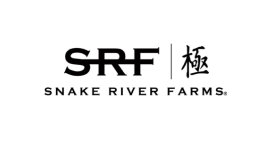

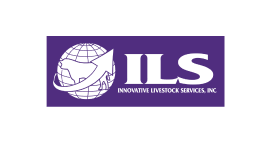
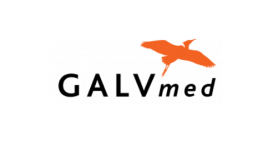
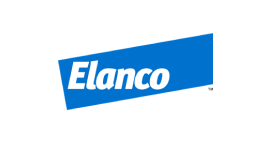
Powered by expert-driven agriculture computer vision, we deliver trusted solutions that keep farms efficient, productive, and ready for tomorrow.
Drive smarter decisions across operations using advanced, scalable computer vision agriculture capabilities.

Reveal early stress signals in crops and animals, delivering a deeper understanding of field health and nutrient needs.

Turn every image into a real-time decision, directly in the field or barn, without waiting for cloud analysis.

Precisely monitor livestock movement and field equipment, simplifying operations and eliminating guesswork across the farm.

Capture the details that matter, whether it’s plant leaf variations or herd condition, across acres or entire operations.

Identify performance drops or animal stress before they escalate so you can intervene confidently.

Bring visual insights into your farm management system, enriching your existing tools with powerful data.

Organize field and livestock images, cutting through the clutter to highlight key performance indicators.

Handle large-scale image data smoothly, transforming raw visuals into clear, actionable insights that drive results.

Stay in control with alerts designed to your farm’s unique needs, prompting action exactly when it’s needed.
Enhance productivity and make timely decision with advanced machine vision technology for agricultural applications.
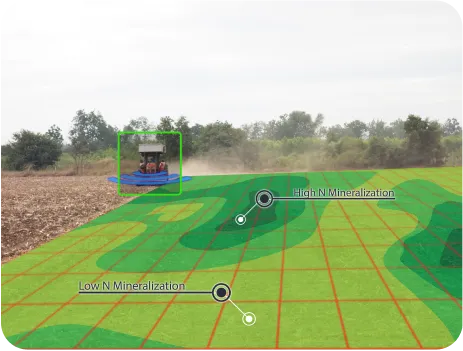
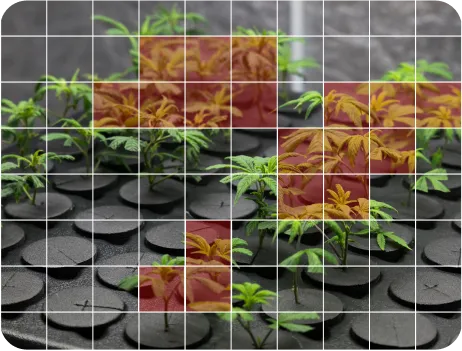
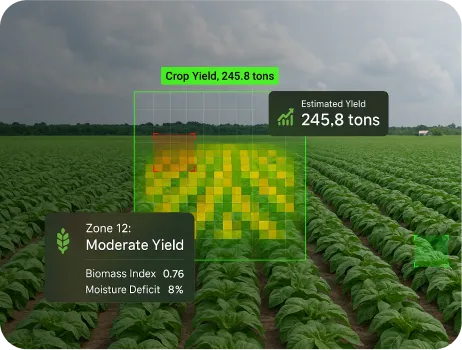
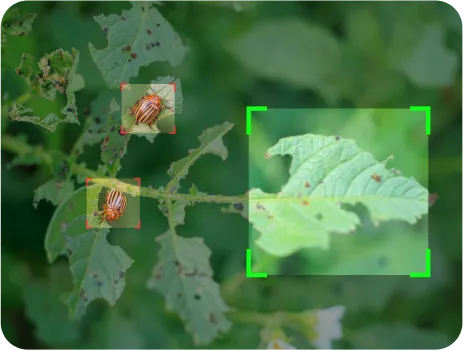
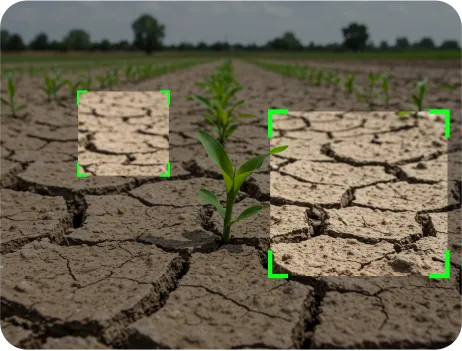
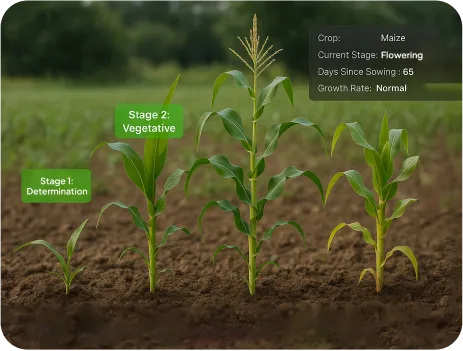
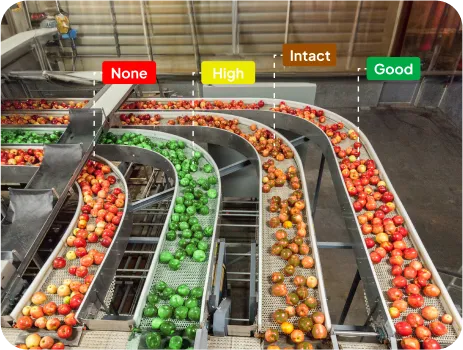
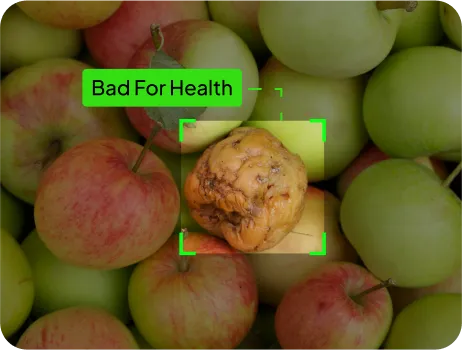
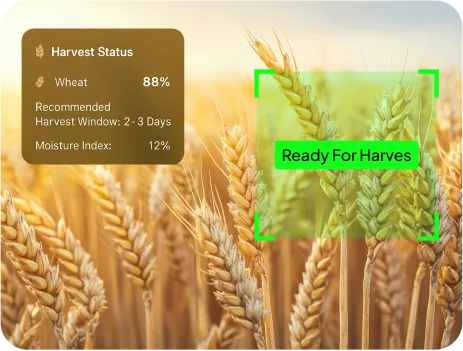
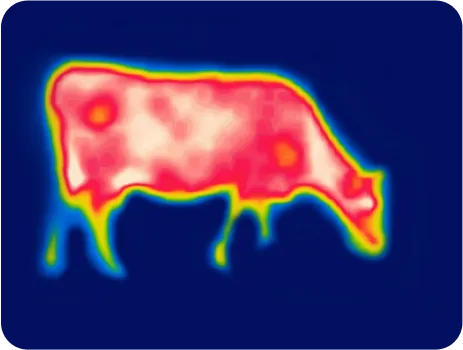
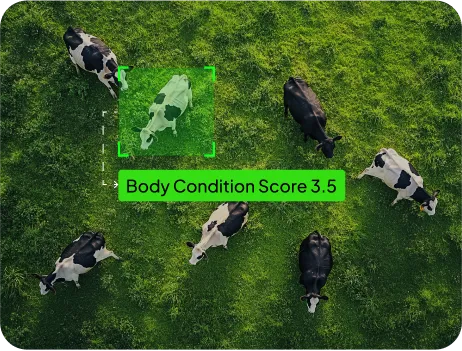
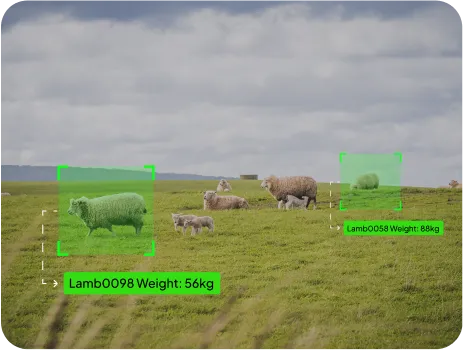
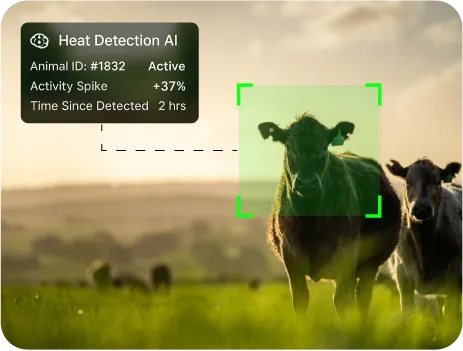
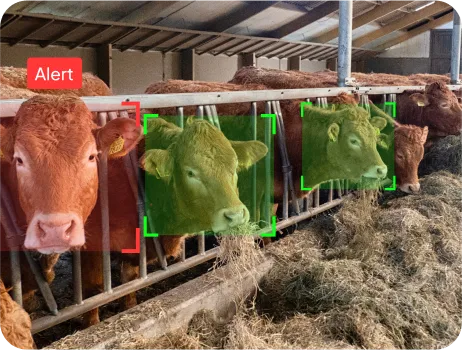
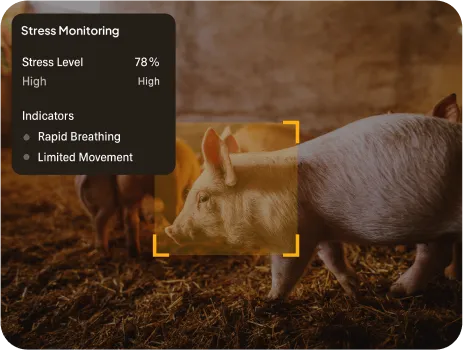

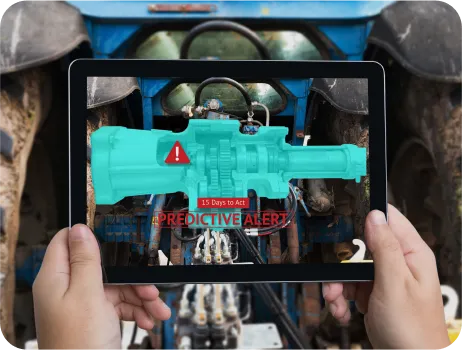
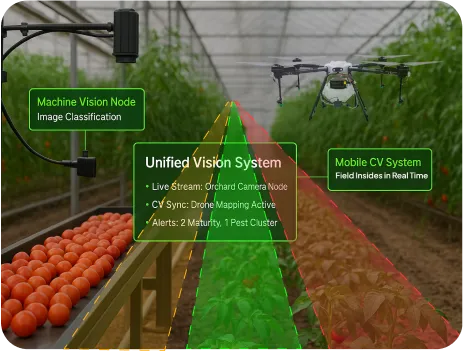
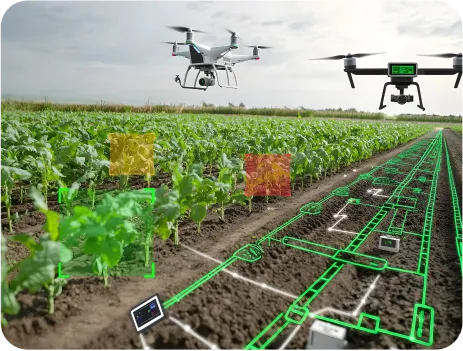
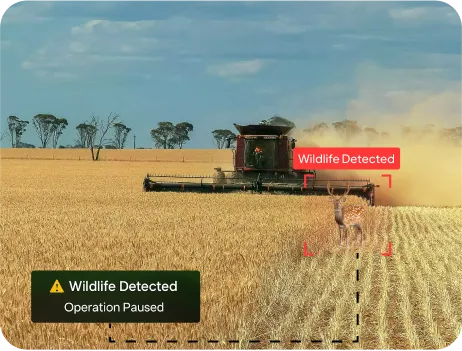
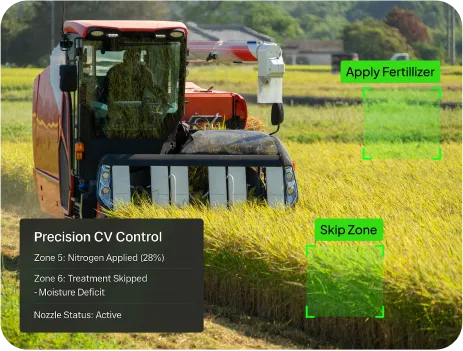
Stay proactive with precise insights that keep fields, animals, and assets performing at peak efficiency.
Computer vision for agriculture transforms raw visual data into actionable insights that drive profitability and efficiency.
Identify potential issues early to minimize losses and avoid operational delays.
Identify exactly where resources are overused or underutilized to cut costs and improve sustainability.
Accurate, real-time data improves your ability to anticipate challenges and identify the improvement opportunities across operations.
Maintain uniform standards by continuously tracking performance indicators and reducing variability.
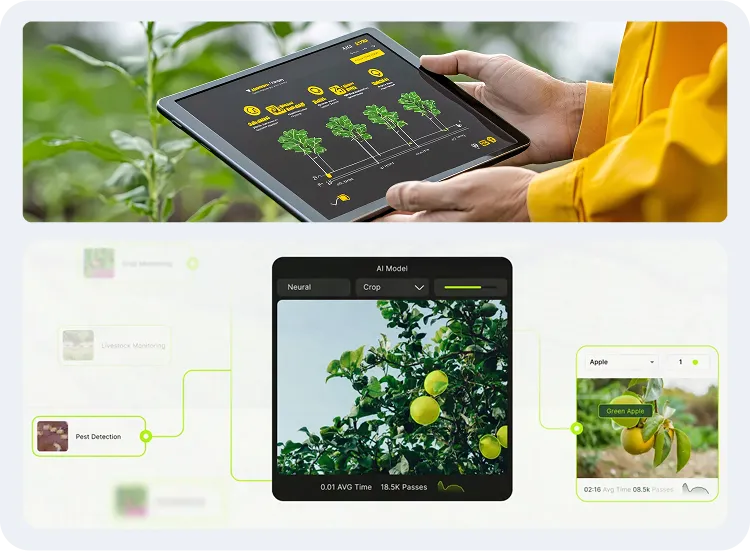
Expert-crafted computer vision for agriculture ensures
precise data flow in real-time.
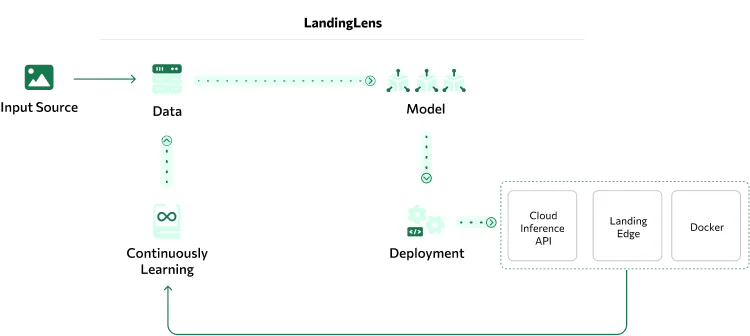

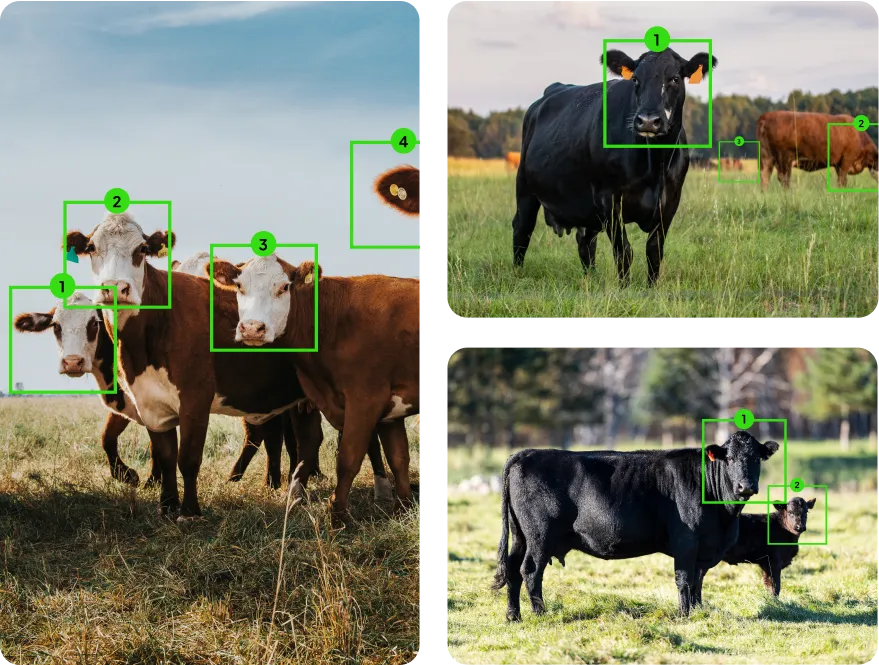
Read what our clients say about their experiences and the difference our solutions have made for them.
Vice President Information Technology
VP of Operations
IT Project Manager
Systems Administrator
Product Manager
Computer vision for plant growth involves using camera-based systems to observe and interpret how crops develop over time. These tools measure growth stages, canopy cover, and color changes, helping farmers understand when a crop is thriving or under stress. This real-time visibility improves crop planning and decision-making.
Computer vision supports crop monitoring in agriculture by capturing visual data from fields and converting it into actionable insights. It detects issues like uneven growth, drought stress, and weed presence early on. Combined with tools like satellite imagery crop monitoring, it enables farmers to track field performance without physically walking every row.
Key applications include row-level crop health tracking, automatic detection of nutrient deficiencies, weed mapping, and selective spraying. Computer vision also supports ripeness detection and size-based sorting in fruit and vegetable production. These capabilities are central to the application of computer vision in agriculture, as they reduce waste and increase per-acre yield.
Drones scan large fields in minutes and capture high-resolution images highlighting crop stress not visible to the naked eye. When combined with visual AI technology for crop monitoring, drones can map areas with poor growth, flag irrigation issues, and identify zones that need immediate attention, cutting response time dramatically.
Through continuous image capture and agriculture image processing, computer vision systems detect early symptoms like leaf discoloration, spots, or holes before they spread. By pinpointing affected zones quickly, farmers can apply treatments only where needed, protecting healthy plants and minimizing chemical use.
In packing houses, computer vision systems evaluate color, shape, and texture to sort fruits and vegetables by quality grades. This ensures consistency, reduces manual labor, and increases processing speed. From apples to tomatoes, grading with vision tools ensures that only market-ready produce reaches distribution.
Combining computer vision with IoT sensors enables real-time feedback loops. For instance, moisture sensors can trigger cameras to scan plants showing signs of wilting, or temperature spikes can prompt visual checks on livestock. This coordination improves decision accuracy across water use, feeding, and disease control.
Using agriculture image processing, vision systems count fruits, measure canopy volume, and assess crop density to estimate yield. When paired with satellite imagery crop monitoring, these predictions become even more accurate, helping farmers schedule harvests, arrange labor, and plan post-harvest logistics more efficiently.
Challenges include variable lighting in outdoor fields, camera maintenance in dusty or wet conditions, and training systems to recognize different crop types or growth patterns. Integration with existing tools can also require customization, especially in mixed operations like crop-livestock farms.
Computer vision tracks animal behavior, detects signs of illness, and monitors weight and feeding patterns. For example, it can alert farmers if a cow shows signs of heat stress or if feeding activity drops, enabling faster interventions that protect animal health and productivity.
By identifying problems early and enabling precise treatments, computer vision reduces chemical inputs, water usage, and fuel waste from unnecessary fieldwork. This lowers the environmental footprint and supports long-term soil and crop health, core principles of sustainable agriculture.
Computer vision tools can be added to field equipment like tractors or sprayers, or connected to farm management software for centralized control. Many systems offer API-based integration, allowing data from visual AI technology for crop monitoring to feed directly into dashboards used for scheduling, compliance, or input planning.
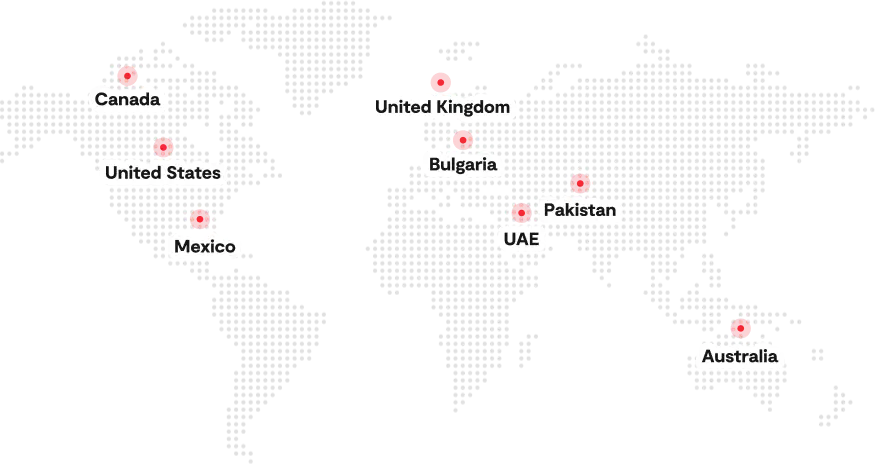
160 Bovet Road, Suite # 101, San Mateo, CA 94402 USA
6701 Koll Center Parkway, #250 Pleasanton, CA 94566
2 – 105 Consumers DR Whitby ON L1N 1C4, Canada
49 Bacho Kiro Street, Sofia, 1000, Bulgaria
Export House, Cawsey Way, Woking, Surrey, GU21 6QX
Amado Nervo #2200 Edificio Esfera 1 piso 4 Col. Jardines del Sol CP, 45050, Zapopan, Jalisco, Mexico
C/- Prime Partners Level 4 1 James Place NORTH SYDNEY New South Wales 2060, Australia
Folio3 FZ LLC, UAE, Dubai Internet City, 1st Floor, Building Number 14, Premises 105, Dubai, UAE
Folio3 Tower, Plot 26, Block B, SMCH Society, Main Shahrah-e-Faisal, Karachi.
First Floor, Blue Mall 8-R, MM Alam Road Gulberg III, Lahore
Corporate 7 by Maaksons, Executive Block, Civic Center 1, Gulberg Green, Islamabad
© 2025 Folio3 Software Inc. All Rights Reserved.
Get a Free Consultation Within 24 Hours, with a No-Obligation Ballpark Estimate
Error: Contact form not found.